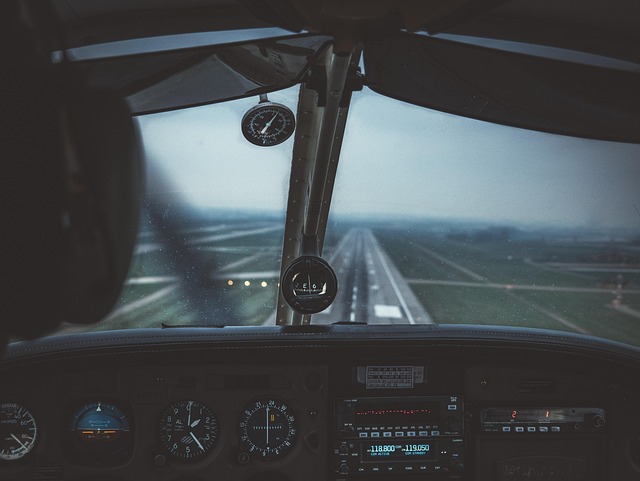Pilot Training for Seniors: Unlock New Horizons and Discover the Benefits of Becoming a Pilot
Pilot training for seniors offers a unique opportunity to explore new horizons and gain valuable skills. Learn how seniors can benefit from becoming a pilot, including the flexibility it provides and the exciting possibilities that await. Discover how to get started today.

The Benefits of Pilot Training for Seniors
Senior pilots bring valuable life experience, patience, and discipline to flight training that often accelerates their learning process. Many flight instructors note that older students demonstrate superior decision-making skills and risk assessment abilities compared to younger counterparts. The structured nature of aviation training appeals to seniors who appreciate methodical approaches to learning complex skills.
Flight training also provides cognitive benefits that support healthy aging. Learning to navigate three-dimensional airspace, manage multiple aircraft systems simultaneously, and make real-time decisions exercises mental faculties in ways that can help maintain cognitive sharpness. The continuous learning required in aviation, from weather interpretation to navigation procedures, keeps the mind engaged and challenged.
What to Know Before Starting Pilot Training
Age limitations for pilot training are minimal, with no upper age restrictions for recreational or sport pilot certificates in most countries. However, seniors should consider medical certification requirements, which become more stringent with age. The medical examination process evaluates vision, hearing, cardiovascular health, and overall physical condition to ensure safe flight operations.
Prospective senior pilots should research different pilot certificate types to determine which aligns with their goals. Sport pilot certificates offer streamlined training requirements and allow flight in lighter aircraft during daylight hours. Private pilot certificates provide broader privileges, including night flying and carrying passengers, but require more extensive training and stricter medical standards.
Physical considerations include the ability to operate flight controls, read instruments clearly, and communicate effectively via radio. Modern aircraft feature ergonomic designs and advanced avionics that can accommodate various physical limitations, making flying accessible to seniors with minor mobility restrictions.
The Joys of Flying for Seniors
Aviation offers seniors a unique perspective on travel and exploration that ground-based transportation cannot match. Flying provides freedom to visit destinations efficiently while enjoying aerial views of familiar landscapes from new vantage points. Many senior pilots describe the meditative qualities of flight, where focus on aircraft operation creates a peaceful mental state away from daily concerns.
The aviation community welcomes senior pilots, creating opportunities for social connections with fellow aviators who share similar interests. Flying clubs, pilot associations, and airport communities provide social outlets where seniors can build friendships centered around aviation activities. These connections often extend beyond flying to include social events, educational seminars, and group travel adventures.
Weather flying and cross-country navigation present ongoing challenges that keep senior pilots engaged long after initial certification. Each flight offers opportunities to apply and refine skills while experiencing the satisfaction of safely completing complex missions using piloting knowledge and judgment.
How Pilot Training Fits into a Senior’s Lifestyle
Flexible scheduling in pilot training accommodates seniors who may prefer daytime lessons or need to work around medical appointments and family commitments. Many flight schools offer accelerated programs for dedicated students or extended programs that allow learning at a comfortable pace without pressure.
Financial planning for pilot training requires consideration of training costs, aircraft rental fees, and ongoing proficiency requirements. Many seniors appreciate the transparent cost structure of flight training, where expenses can be predicted and budgeted accordingly. Some flight schools offer senior discounts or flexible payment arrangements to make training more accessible.
| Training Type | Typical Duration | Cost Range | Key Features |
|---|---|---|---|
| Sport Pilot | 3-6 months | $4,000-$7,000 | Light aircraft, daylight only, simplified medical |
| Private Pilot | 6-12 months | $8,000-$15,000 | Full privileges, night flying, passenger carrying |
| Recreational Pilot | 4-8 months | $6,000-$10,000 | Limited range, no commercial flights |
Prices, rates, or cost estimates mentioned in this article are based on the latest available information but may change over time. Independent research is advised before making financial decisions.
Training locations vary from busy airports with multiple instructors to smaller fields offering personalized attention. Rural airports often provide less congested airspace for initial training, while urban locations may offer more scheduling flexibility and modern training aircraft. Many seniors prefer smaller facilities where they can develop relationships with instructors and receive individualized attention throughout their training journey.
Pilot training for seniors represents an achievable goal that combines personal accomplishment with practical skills. The aviation community’s support for learners of all ages, combined with modern training methods and aircraft technology, makes flight training an accessible pursuit for those seeking new challenges and perspectives in their later years.




